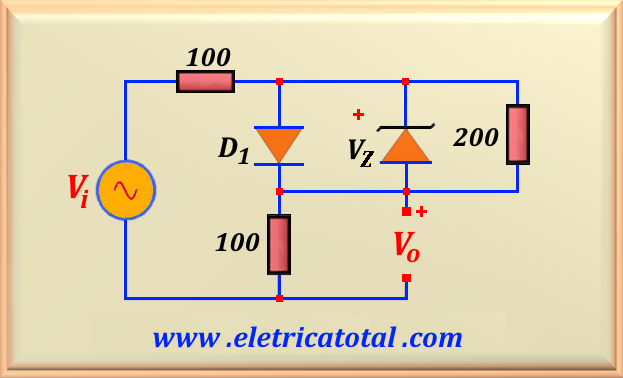Problem 65-2
Source: Problem elaborated by the author of the site.
Let be the circuit shown in the Figure 65-02.1. Assume that Vi = 20 sin 100 t, VZ = 10 volts and VD = 0.7 V. Find the output voltage as a function of the input voltage.
Solution of the Problem 65-2
When the input voltage Vi initiates its value growth towards the positive peak,
the diode D1 will not conducting until the voltage across the diode reaches 0.7 V.
The zener will not conducting either. In this range, we can determine the output voltage by making a voltage
divider with the circuit resistors. So:
When the voltage across the diode reaches a value of 0.7V, this voltage will remain constant.
Thus, the diode does not allow the zener diode to enter conduction. That is, in the positive sine cycle
the circuit acts as if there were no zener diode. Then the current Io can be calculated, or:
ANow, looking at the negative cycle of the sinusoid, we find that the diode will be in its cutting zone, while the zener diode will act as a common diode. So for the negative cycle we will get the same answers we got for the positive cycle. Therefore we can write that:


